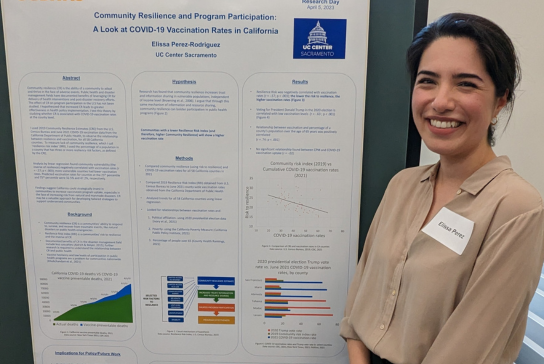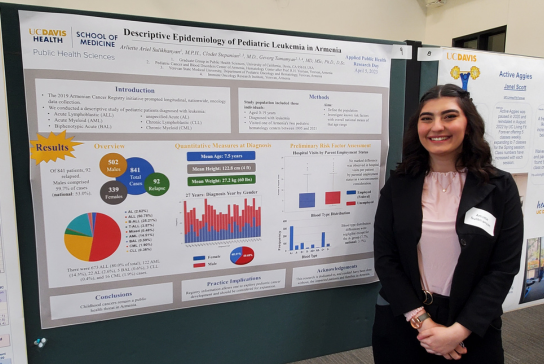Applied Public Health Research Day
Showcasing research on public health, health services, health outcomes and health policy in recognition of National Public Health Week.
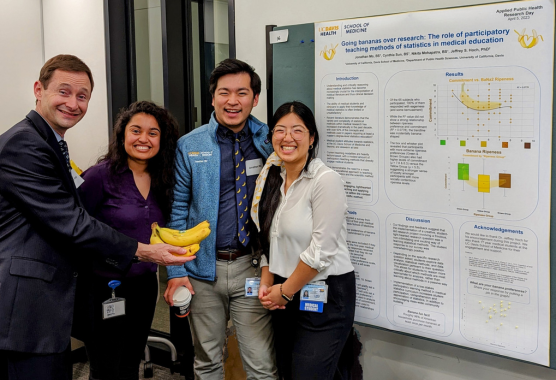
Thank you to all those who participated in the first Applied Public Health Research Day on April 5 at Walker Hall in Davis. You helped to make the inaugural event a success!
Applied Public Health Research Day was co-hosted by the Center for Healthcare Policy and Research (CHPR), Graduate Group in Public Health Sciences (GGPHS) and Healthy UC Davis.
Thank you to our sponsors!
|
|
|
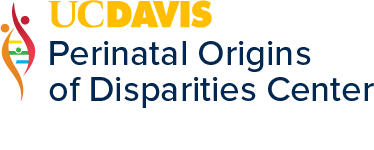 |
UC Davis Equity in Mental Health Fund |
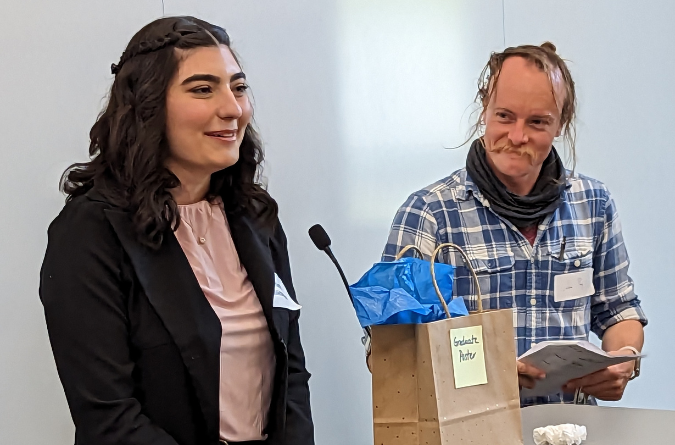
In the news
More than 120 students, faculty and staff attended the first Applied Public Health Research Day at UC Davis. They got the chance to learn and network with students and postdoctoral scholars who presented a variety of public health research projects and studies.
The event celebrated National Public Health Week. It included more than 30 posters from undergraduate, graduate and medical students, as well as postdoctoral scholars, fellows and staff from the UC Davis campuses in Davis and Sacramento.
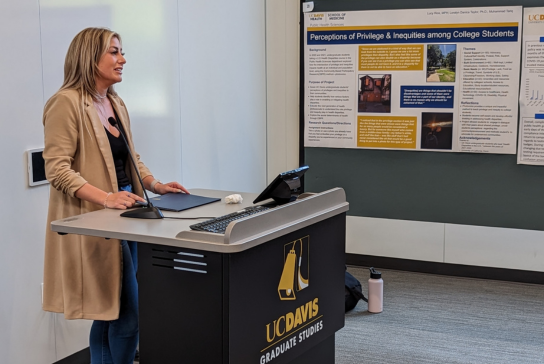
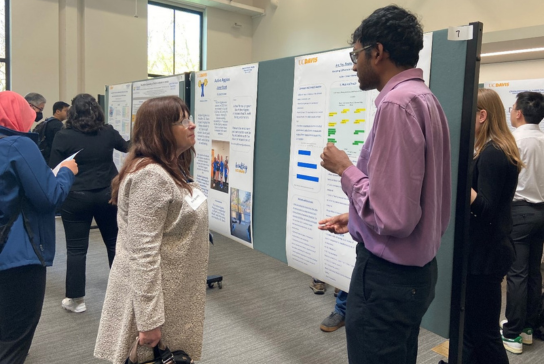
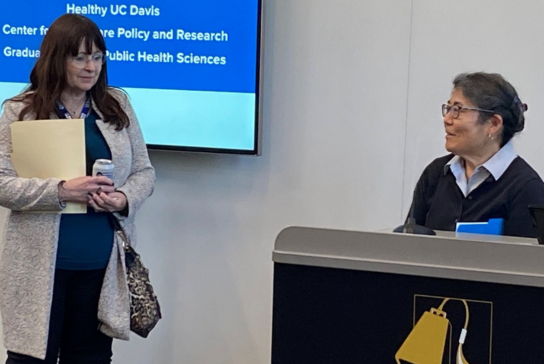
Indira D'Souza
Major(s): Global Disease Biology
Introduction: Using a novel viral respiratory illness mitigation scale (VRIMS), we assessed the relationship between COVID-mitigation behaviors, physical activity, diet, and race/ethnicity in a cohort of pregnant people with overweight and obesity from the Goals for Reaching Optimal Wellness (GROWell) trial.
Methods: All enrolled GROWell participants (N=369) completed a baseline survey including VRIMS, a Rapid Eating Assessment for Participants survey, Pregnancy Physical Activity Questionnaire, and a demographics survey. We performed a correlation analysis between the VRIMS score, physical activity, and diet. General linear models were used to assess race/ethnicity effects.
Results: More than 60% of participants engaged in at least 5 out of the 8 illness-mitigating strategies. VRIMS scores were positively correlated with diet and total physical activity. Both African American/Black and Asian participants reported higher VRIMS scores than White participants; Hispanic participants reported higher VRIMS scores than Non-Hispanic participants.
Conclusion: GROWell participants who engaged in more illness-mitigating strategies also engaged in more physical activity and had higher quality diets.
Implications: Maternal outcomes in the United States are declining, particularly in historically marginalized communities; our data suggest that racism and structural determinants of health are more important for maternal health than health behaviors.
Paulina Frost
Major(s): Global Disease Biology
Introduction: Previous research has shown that Spanish speakers in the United States have higher rates of COVID-19 infection, exposure, and hospitalization than English speakers.
Methods: This was a mixed methods study based on data collected through a large test-negative design case-control study among those recently tested for SARS-CoV-2 in California, conducted by phone interviews in English and Spanish between 24 February 2021 and 31 August 2022. We used mixed effects unadjusted and adjusted logistic regression to assess the relationship between preferred survey language and worry about COVID-19.
Results: We found that Spanish speakers had significantly higher odds (adjusted odds ratio; 1.98, 95% confidence interval; 1.12, 3.52) of reporting worry about getting COVID-19 compared to English speakers.
Conclusion: This study fills in the gaps to show what effect health disparities due to language have on perceptions of personal COVID-19 risk. Drivers of worry may include structural racism, lack of access to quality healthcare, economic instability, anti-immigration policy, and unsafe working environments.
Implications for Policy: Ultimately, this study identifies populations experiencing higher worry about COVID-19, equipping public health stakeholders to tailor messaging and resources to improve COVID-19 health outcomes in Spanish speakers.
Stephanie Ha
Major(s): Human Development
Purpose: Knowledge is a key predecessor to preventative behavioral decision-making, yet educational resources regarding sexual and reproductive health (SRH) remain limited. The purpose of this study was to assess availability of SRH information from birth to young adulthood.
Methods: We analyzed online content for the following: body development, educational consent, contraception, family planning, relationships, gender identity, sexually transmitted infections (STIs), and other (e.g., law assistance).
Results: We identified 25 unique sources of SRH information, which were disaggregated for the following age groups: 0 to 5, 6 to 12, 13 to 18, and 19 to 25 years. No source included all themes. A significant gap included gender identity, which was missing from 53% of resources for 13 to 18 year olds, and educational consent, which was missing from 50% of resources for 19 to 25 year olds.
Conclusion: Accurate and accessible SRH information from infancy through young adulthood is critical, especially in communities where rates of unintended pregnancy, STIs, and gender-based violence are high.
Implications for Practice or Policy: Future work is needed to develop accurate, evidence-based, and easily accessible SRH information that can be distributed in culturally appropriate ways to improve health literacy and reduce disparities in SRH outcomes.
Annalise Kalmanoff
Major(s): Sociocultural Anthropology
Introduction: Asian-American women experience significant health disparities in cervical cancer, specifically regarding screening rates. Cervical cancer is one manifestation of the sexually transmitted infection HPV and is detected with pap tests. Treatment has a high success rate when caught early. The U.S. has a responsibility to target this health disparity, especially given the ease of tests and treatment.
Methods: A systematic literature review using PubMed to find studies presenting interventions to increase cervical cancer screening in Asian-American women was conducted. Interventions targeting Asian-American women as a whole make implementation more efficient.
Results: Half of the reviewed studies focused on Vietnamese-American women, while the others focused on Korean-American, Chinese-American, and Cambodian-American women. Each intervention presented increased screening, but none reached target screening rates. There were three main intervention categories: education group, education group involving lay health workers, and in-home visits.
Conclusion and Implications for Policy: Education group interventions showed the biggest increases in screening rates. Policy efforts to increase cervical cancer disparities amongst Asian-American women should include community-based approaches, specifically culturally attuned education sessions. Given that none reached targeted screening rates suggest interventions should work in collaboration with other efforts, as they are not sufficient independently.
Umesh Natesan
Major(s): Political Science and Public Service
Background: Prior literature suggests that having a usual source of care (USOC) is associated with positive health outcomes (e.g. early disease detection/treatment, chronic disease management). In other work, concerns have been raised about healthcare access for Medicaid recipients (Medi-Cal in California), but the degree to which income influences this has not been fully examined. We used a population-based survey to compare differences in having a USOC before and after adjusting for income for Medi-Cal and “other” insurance recipients.
Methods: Using data from the 2021 California Health Interview Survey we regressed USOC against Medi-Cal vs. other insurance (predominantly private). An additional regression was preformed controlling for income (18 levels, 10K increments). The corresponding odds ratios were then compared.
Results: Compared to those with “other” insurance (OR 10.5, 95% CI 9.19 to 11.97), Medi-Cal recipients (OR 4.1, 95% CI 3.51 to 4.79) were far less likely to report having a USOC. These associations persisted after controlling for income.
Conclusions: Regardless of income, “other” insurance is far more likely to indicate a USOC than Medi-Cal. Income does not have a large effect on odds of having a USOC for Medi-Cal.
Policy Implications: Legislators should focus on improving Medi-Cal rather than using income-based subsidies.
Danny Nguyen
Major(s): Chemical Engineering
Introduction: Vietnamese Americans (VAs) are of higher risk to the likes of diabetes, tuberculosis, and certain cancers. Most pressing of these health issues is the extraordinary rates of cervical cancer and colorectal cancer, the latter of which is consistent amongst many AAPI groups. Yet Asian Americans utilize cancer screening measures significantly less than non-Hispanic Whites and are the only ethnic group to have cancer as a leading cause of death. Linguistic barriers, cultural health attitudes, and wealth are all barriers to preventive screening services amongst VAs that have been difficult to overcome.
Methods: I conducted a systematic literature review of studies published on the search engine PubMed. I searched for randomly controlled trials conducted in the 21st century that contained a Vietnamese American only population and used cancer screening rates for various cervical, breast, and colorectal cancer screening tests as their main outcome.
Results: Across the studies, lay health worker outreach (LHWO) consistently increased the use of cancer screening tests, increased adherence to testing guidelines (having an up to date test), and improved individuals’ understanding of cancer and cancer screening tests. Media education campaigns, on the other hand, had mixed results, and a smaller impact on health attitudes and behaviors than LHWO.
Conclusion: Culturally targeted intervention through lay health workers can provide a flexible means to break down cultural barriers and promote preventative care in ways that traditional accessibility programs do not. With further research LHWO programs may prove to be very cost-effective.
Implications: Implementing programs that combat cultural barriers to increase screening would improve health outcomes for the Vietnamese community and could help us target health disparities amongst other populations, which is a major focus of the American health system right now.
Elissa Perez
Major(s): Sociology and Public Health
Introduction: Community resilience (CR) is the ability of a community to adapt and thrive in the face of adverse events. Public health and disaster management fields have documented benefits of leveraging CR for delivery of health interventions and post-disaster recovery efforts. The effect of CR on program participation in the U.S has not been studied. I hypothesized that increased CR leads to greater effectiveness in health policy implementation. I test this theory by studying whether CR is associated with COVID-19 vaccination rates at the county level.
Methods: I used 2019 Community Resilience Estimates (CRE) from the U.S. Census Bureau and June 2021 COVID-19 vaccination data from the California Department of Public Health, to observe the relationship between resilience and vaccination, for all 58 California counties. To measure lack of community resilience, which I call ‘community vulnerability’, I used the percentage of a population in a county that has three or more resiliency risk factors, as defined by the CRE.
Results: Analysis by linear regression found community vulnerability (the inverse of resilience) negatively correlated with vaccination rates (r = -.57; p < .003); more vulnerable counties had lower vaccination rates. Predicted vaccination rates for counties at the 25th percentile and 75th percentile were 32.5% and 47.2%, respectively.
Conclusion and Implications for Practice or Policy: Findings suggest California could strategically invest in communities to increase vaccination program uptake, especially in the face of increasing risk from natural and manmade disasters. CR may be a valuable approach for developing tailored strategies to support underserved communities.
Nikita Satish
Major(s): Global Disease Biology
A systematic review of behavioral interventions to improve maternal health in pregnant people at high risk for cardiometabolic complications
Introduction: Cardiovascular (CV) related complications of pregnancy are a predominant cause of maternal mortality in the US. Despite this, few behavioral interventions address adverse maternal outcomes in CV complications.
Methods: We conducted a systematic review of randomized controlled trials of behavioral interventions for pregnant people at high risk for cardiometabolic complications that were published after 2005. 2,521 articles were screened at the title/abstract level, 188 articles were screened at the full text level, and 43 studies were included for data extraction.
Results: The most common high-risk factors included: overweight and obesity (N=23), and diabetes (N=14). Intervention targets included diet (N=14), physical activity (N=8), or a combination (N=21). Most studies were conducted in White Non-Hispanic populations.
Conclusion: 58% of the RCTs (N=25) showed significant improvements in maternal outcomes. Heart-healthy diets and increased physical activity are associated with better CV health.
Implications for Policy: The effects of these behaviors need to be more carefully studied prenatally, with increased racial/ethnic diversity of participants and culturally tailored interventions that address issues of structural determinants of health.
Anastasia Trushchankova
Major(s): Biomedical Engineering
Introduction: Implicit bias in healthcare leads to patient dissatisfaction and noncompliance. However, if empathy is taught early in doctors’ careers, doctors can provide more compassionate and equitable healthcare. Two previous systematic reviews looked at studies through 2018, but subsequent studies have altered their conclusions. Thus, my literature review to explore the question of: Does empathy training during medical schooling improve doctors’ attitudes toward patient interactions?
Methods: This systematic review used PICO framing to develop a keyword searching method, which resulted in 50 studies published from 2019 to 2022 in PubMed. After using inclusion criteria, 11 studies were analyzed.
Results: While there was no significant difference between the multimodal intervention types, doctors that received any training intervention scored higher on the Four Habits Coding Scheme, a tool for assessing interpersonal skills, compared to the control group.
Conclusion: This literature review emphasizes the need for empathy training because it significantly improves doctors’ attitudes toward empathetic care, doctors’ communication skills, and patient-perceived interactions with their doctors.
Policy Implications: Policy makers should invest in a calculated budget for implementing engaging empathy training programs. This review can suggest that the benefits of improved patient-care and reduced physician burnout will eventually outweigh the costs.
Heather Barr
Department of Public Health Sciences
Introduction. COVID lockdowns forced students into Zoom learning away from their peers, deteriorating campus community during a stressful time. We aim to rebuild community using the Ambassa-labradors (trained dogs) as a form of social lubricant to encourage interactions, rebuild social support networks, and decrease stress.
Methods. Grounded in the Social Buffering Hypothesis, this pilot study brought trained dogs to campus in September 2022. A survey was administered on campus to volunteers through Qualtrics via QR code to collect information about participant characteristics and their experiences of stress.
Results. Over 200 people attended the first event with a 29% survey response rate; 86% were students. Most students felt that interacting with the dogs decreased their feelings of acute stress (96%) and most students reported interacting with more than one new individual (96%).
Conclusion. The pilot results shows promise that this program can reduce acute feelings of stress among students. Future data collection will help explain the efficacy of using dogs to rebuild community and reduce chronic stress.
Implications. This project is a novel approach to rebuilding a campus community after the isolation brought on by Zoom school. Through dog and peer interactions, we aim to reduce both acute and chronic stress.
Nancy Chen
Department of Public Health Sciences
Introduction: Whether subjective cognitive evaluations can accurately predict cognitive decline is not well understood in ethnically diverse populations nor oldest-old. In a multi-ethnic cohort of adults aged 90+, we aim to investigate the association between self-perceived memory concerns and objectively measured cognitive change.
Methods: LifeAfter90 comprises Kaiser Permanente Northern California members ages 90+. Verbal episodic memory (VEM) and executive function (EF) were assessed every 6 months between July 2018-March 2022 using the Spanish and English Neuropsychological Assessment Scales. At baseline, participants answered yes or no the question “Are you concerned that you have a memory or other thinking problem? (MC)” Linear mixed models adjusted for baseline age, sex, race/ethnicity, education, interview mode (in-person or phone), and practice effects.
Results: At baseline, participants (n=975) had a mean age of 92.4 years, 61% were women, 73% were racial/ethnic minorities, and 36% reported MC. MC was associated with worse baseline VEM (b=-0.17, 95% CI -0.27,-0.07) and EF (b=-0.08, 95% CI -0.15,-0.01), but not associated with rate of change for either domain.
Conclusion: In this diverse cohort of oldest-old, those with subjective MC had worse baseline VEM and EF. However, MC is not associated with decline.
Implications for Practice or Policy: MC may not be useful to predict cognitive decline among adults 90+.
Nancy Chen
Department of Public Health Sciences
Introduction: Subjective evaluations of cognition are convenient to administer and can be useful if they accurately identify or predict cognitive impairment. We investigated the relationship between subjective and objective measures of cognition in a cohort of Black older adults.
Methods: The Study of Healthy Aging in African Americans (STAR) comprises Black adults ages 50+. Verbal episodic memory (VEM) and executive function (EF) were assessed yearly from 2018-2021 by the Spanish and English Neuropsychological Assessment Scales. We operationalized subjective cognition as 1) average score of Everyday Cognition (ECog) responses and 2) self-perceived memory concerns. Linear mixed models adjusted for baseline age, gender, education, parental education, and interview mode (in-person or phone).
Results: Participants’ (n=671) baseline mean age was 68.4 years, 70.2% were women, mean ECog was 1.26, and 40.1% reported memory concerns. Memory concerns were associated with worse baseline VEM and EF, but not associated with rate of change. ECog was associated with rate of change for VEM (b=-0.09, 95% CI -0.17,0.002) and EF (b=-0.07, 95% CI -0.13,-0.003).
Conclusion: The ECog was associated with worse objective executive function and verbal episodic memory and faster declines in both domains in this sample of older Black adults.
Implications for Practice or Policy: The ECog may have clinical utility in early dementia detection.
Emma Fernandez
Masters in Public Health program, School of Medicine
Introduction: The MIND Institute’s Transition to Adulthood Clinic (TAC) supports families and neurodiverse individuals' lifecourse transition from pediatric to adult care (16-26 years). Previous studies have found gaps in transition: healthcare advocacy, communication, and independent living (education & jobs). The objective of this study was to provide a qualitative understanding of self-advocate and family perspectives for TAC to offer community-based care.
Methods: Two focus group conversations were conducted with (4) neurodiverse self-advocates and (4) family experts recruited from the community, based on a literature review and community experiences. Participants identified priority areas of need during transition. Thematic analysis was performed on the de-identified and coded transcripts.
Results: Participants varied in age (18-55+), were mostly female, and generally White; some representation of Latino and Asian. Seven main themes emerged, consistent with previous literature, as areas of need: healthcare recommendations, facilitators & barriers to healthcare access, cultural and linguistic factors, priority areas for transition, worries/frustrations, and social/community/governmental support (one health). Parents identified needs for an improved healthcare system: comprehensive care, creating community, and parent advocating. Self-advocates identified needs for person-centered care like: supported decision-making, meaningful community experiences, understanding of Autism culture, and consistency with services.
Conclusion: Allows self-advocates and their families voices to be heard by identifying issues important to them with regards to transition. These results inform the TAC services to shape and deliver empowering care that support successful transitions for parents and self-advocates.
Implications for Practice: By using community identified care gaps, the MIND institute may address disparities and social determinants (discrimination, non-accessibility, autonomy & more) surrounding transition. This project could inform future decision making regarding transition policies and services.
Andrea Guggenbickler
Graduate Group in Public Health Sciences
Introduction: There is consensus among sex educators and advocates that sexual education is key in preventing teenage pregnancy and lowering adolescent birth rates. However, there is a lack of scientific literature examining its impact in rural communities.
Methods: A systematic literature review was conducted using MedLine, SCOPUS, Web of Science, and CINAHL. The search identified articles examining the effectiveness of sex education impacting adolescent pregnancy and birth rates in rural communities from 1970-2022.
Results: The search identified 1187 unique citations; 11 met the inclusion/exclusion criteria. Studies were conducted in the US, Tanzania, South Africa, Vietnam, and Haiti. The results of this review indicate that a majority of sex education programs significantly reduced the rates of adolescent pregnancy and birth in target rural communities.
Conclusion: There is a lack of research on sexual education’s impact in rural communities. What research exists suggests that sex education can reduce rates of pregnancy, however limitations like lack of generalizability and small sample sizes call for additional research.
Implications for Policy: Sex education could impact the sexual health of rural adolescents. There is opportunity to enact policy requiring sex education be taught to adolescents in rural communities which could stand to improve their health.
Caroline Joyce
Graduate Group in Public Health Sciences
Introduction: The Tanzania Food and Nutrition Center carried out studies in Mbeya Region, Tanzania to inform the Improving Maternal and Adolescents Nutrition project. We aimed to assess nutritional status among women of reproductive age (WRA; 15-49 years).
Methods: We conducted a cross-sectional survey in July 2022 (N=500) using 24-hour recalls and a household module for demographic information. Repeat recalls were conducted among a subsample (n=120). We used the National Cancer Institute (NCI) method to estimate usual nutrient intakes and the prevalence of inadequate intake.
Results: The mean age was 32.4. Approximately two-thirds of participants were rural-dwelling (63.6%) and had completed primary school (63.0%). The prevalence of inadequate intake was >90% for vitamins C and E, riboflavin, iron, and zinc and was over two thirds for vitamin A (78.2%), vitamin B12 (82.0%), niacin (68.3%), and thiamin (72.0%). Slightly over 50% had inadequate vitamin B6 and folate consumption. There were no differences by age, education, or rural-/urban-residence.
Conclusions: Inadequate intake of 11 micronutrients is highly prevalent among WRA in Mbeya, Tanzania. Nearly all women in the sample would benefit from increasing vitamin C and E, riboflavin, iron, and zinc consumption.
Implications: These findings will help guide maternal health interventions and national-level fortification strategies in Tanzania.
Rachel McKenzie
Department of Communication
Introduction: Those experiencing stigmatized health concerns—such as depression—are more likely to seek support online and there are a number of factors that can influence the quality of support that they receive. This study aims to address the impact of linguistic agency (depression or the individual) and causality (biological or non-biological) on the politeness of provided support based on politeness theory.
Methods: N=270 undergraduate students were assigned to provide support to a help-seeker under one of six conditions based on a 2 (agency: human vs. depression) x 3 (causality: hormones vs. job vs. relationship) design. The job vs. relationship conditions were collapsed for analyses. Linguistic Inquiry and Word Count (LIWC) was used to analyze politeness levels and a one-way ANOVA was used to examine differences between conditions in politeness.
Results: There was no difference in politeness between the different conditions.
Conclusion: Agency and causality appeared to have no effect on the level of politeness in provided social support.
Implications for practice: Considering participants’ support quality did not differ based on agency and causality, individuals can be encouraged to seek support on online forums regardless of their understanding and interpretation of the causes of their depression.
Lucy Rios
Department of Public Health Sciences
Introduction: In 2020 and 2021, undergraduate students taking a course in the Public Health Sciences department explored how the intersection of privilege and inequities impacts health using the Community Based Participatory Research method - photovoice. The study aimed to assess undergraduate students' perceptions of privileges and inequities in their communities using photography.
Methods: Students submitted a photo (n=252) of what they perceived as either a privilege or inequity. Two decks of deidentified photos (privilege and inequity) were presented in class for students to engage in conversation.
Results: The analysis resulted in five themes: Social Support; Built Environment; Basic Needs; Education; and Health. While most of the results of the photos submitted by students were identified as a privilege (n=213); during the group discussion, students stated that photos could also belong in the inequity category, highlighting the duality of privilege and inequity in health.
Conclusion: Photovoice allows students to become self-aware and develop effortful thinking in addressing health disparities and encourages students to engage in dialogue with their peers.
Implications for practice: Incorporating photovoice into college students’ public health curriculum is an impactful method to teach privilege and inequity and its impacts on health at individual and population levels.
Arliette Sulikhanyan
Graduate Group in Public Health Sciences
Introduction: The 2019 Armenian Cancer Registry initiative prompted longitudinal, nationwide, oncology data collection. We conducted a descriptive study of pediatric patients diagnosed with leukemia: acute lymphoblastic (ALL), acute myeloid (AML), biphenotypic acute (BAL), unspecified acute (AL), chronic lymphoblastic (CLL), and chronic myeloid (CML).
Methods: The study population included individuals aged 0-19 years diagnosed with leukemia who visited one of Armenia's two pediatric hematology centers between 1995 and 2021. We defined the population, and investigated known risk factors with overall national means of that age range.
Results: Of 841 patients, 92 relapsed. Males comprised 59.7% of cases (national: 53.0%). There were 673 ALL (80.0% of total), 122 AML (14.5%), 22 AL (2.6%), 5 BAL (0.6%), 3 CLL (0.4%), and 16 CML (1.9%) cases. Mean age, height, and weight at diagnosis were 7.5 years, 122.8 cm, and 27.2 kg. Blood type distribution differences were negligible except for the A- group. No marked difference was observed in hospital visits per patient by parental employment status.
Conclusion: Childhood cancers remain a public health threat in Armenia.
Practice Implications: Registry information allows one to explore pediatric cancer development and should be considered for expansion.
Monica Torreiro-Casal
Chicana/o/x studies
The purpose of the Community Healing through Creative Art expressions group was to address the mental health needs of undocumented students on campus. These students experience multiple systemic barriers that affect their emotional wellbeing and they often lack access to mental health services. The purspose of our program was to support undocumented students with a mental health intervention incorporating Creative Art Expressions. The group evaluation was done with ongoing survey measures during the program implementation. Results from the program indicated a great success; students shared how the program helped them to develop healing skills to cope with stress. Students also indicated enjoying the sense of community and group cohesion. Implications from this program show the relevance of developing nontraditional mental health initiatives that engage and support underrepresented students.
Nan Wang
Department of Public Health Sciences
Objective: To understand associations between e-cigarette, cigarette, or cannabis use and mental health conditions among U.S. college students before and during the COVID-19 pandemic, and if these associations were different across time periods.
Methods: This cross-sectional study included 179,616 college students from 4 waves (Fall 2019 to Spring 2021) of the American College Health Association-National College Health Assessment survey. Mental health conditions included serious psychological distress, anxiety, and depression. Current use was defined as past 30-day use, and a separate variable was created for multiple product use. Multiple logistic regression models were applied to examine the associations between tobacco or cannabis use and mental health conditions, adjusting for covariates and time periods.
Results: All mental health conditions increased from before to during COVID-19. E-cigarette, cigarette, or cannabis use was associated with 1.5-2.1 times higher adjusted odds of mental health conditions than non-current use, with the highest associations in Fall 2020 and persistent associations in Spring 2021. Multiple product use had even higher associations (1.7-3.1 times).
Conclusions: U.S. college students have an increasing burden of mental health conditions that have significant associations with using tobacco or cannabis products. The higher associations with using multiple products and during the later time periods demonstrate a need for interventions.
Nan Wang
Department of Public Health Sciences
Disparities of the Receipt of Smoking Cessation Advice and Assistance Among Smokers with and Without Chronic Disease(s) in California’s Medicaid Program
Objective: To examine if smokers enrolled in Medi-Cal without chronic disease(s) get an equitable chance to receive smoking cessation advice or assistance from health professionals among smokers, compared to those with chronic disease(s).
Methods: This study included a total of 3,517 smokers with Medi-Cal from the California Health Interview Survey (2014, 2016-2018). The outcome was the receipt of smoking cessation advice or assistance in the past 12 months. Chronic disease(s) was defined as the diagnosis of at least one of the following: asthma, diabetes, hypertension, or heart disease.
Results: Overall, 49.4% of smokers received smoking cessation advice, and 29.4% received assistance. Among Medi-Cal smokers, 13.5% got asthma, 13.9% got diabetes, 40.7% had hypertension, and 9.6% got heart disease. Compared to smokers without chronic disease(s), smokers with chronic disease had a higher percentage to receive advice (33.7% vs. 63.9%) and assistance (20.5% vs. 37.7%). The odds ratio of the receipt of advice among smokers with chronic disease(s) decreased from 2.31 (P<.001) to 2.08 (P<.001) after adding to the frequency of doctor visits. The odds ratio of the receipt of assistance among smokers with chronic disease(s) decreased from 1.77 (P=.025) to 1.43 (P=.090) after adding to the frequency of doctor visits.
Conclusions: Smoking cessation advice and assistance are important for every smoker. Not enough good jobs (i.e., cessation advice and assistance) for all smokers. Smokers without chronic disease should be treated equitably as smokers with chronic disease(s) to receive advice and assistance, and they should receive timely treatments before they get sicker.
Jonathan Mo
UC Davis School of Medicine
Title: Going bananas over research: The role of participatory teaching methods of statistics in medical education
Background: Understanding statistics has become increasingly crucial for clinical decision making and has thus become an important part of medical education. However, a majority of medical students feel lukewarm at best about statistics in their education, demonstrating the need for a more creative and inspiring educational approach.
Methods: To engage our classmates in statistics education, we conducted a survey from February to March 2023 of first-year medical students at the UC Davis School of Medicine regarding their preference of banana ripeness and level of commitment to their stated preference.
Results: Of the 62 subjects who were asked to participate, 100% of them responded with eagerness (and some bemusement). A polynomial regression was used to determine the correlation between banana ripeness preference and level of commitment. While the R2 value did not have a strong correlation (R2 = 0.064), the trendline was incidentally banana-shaped.
Conclusions: The student response to our survey was overwhelmingly positive. Our findings suggest that the implementation of creative, student-led research projects in statistics curriculum may increase student participation, comprehension and appreciation of statistics, in addition to encouraging class-wide community building.
Linda Adams
Healthy UC Davis
Title: Diabetes Prevention Program
Introduction: The Diabetes Prevention Program (DPP) pilot was a lifestyle change program implemented to help prevent UC Davis affiliates with pre-diabetes from developing type 2 diabetes over a six-month period. The CDC DPP goal is 3 -5% weight loss at six months and 5 -7% at twelve months, as this has been shown to contribute to a reduced risk of developing type 2 diabetes by 58%.
Methods: This pilot program used a hybrid model with weekly in-person or online meetings through a Facebook group page. Instructors provided a lesson about a health topic directly related to diabetes, followed by group work and individual assessments. Weight was recorded every two weeks, attendance at each session, and participant feedback was obtained via surveys.
Results: 46% of participants achieved a weight loss of at least 5% body weight, with a mean weight loss of 8.7 lbs. 15% of participants lost more than 9% body weight (p=0.0039). In-person and online sessions were attended equally, with an average attendance of 13.6 people per session out of 19 enrolled.
Conclusion: Participant and instructor feedback indicated that a longer program would be more effective. The Facebook sessions were not effective in supporting participants. Optimal duration of the program is at least one-year to ensure a natural pace that still offer regular opportunities for reinforcement.
Implications for Practice: With lessons learned from the pilot, the Staff and Faculty Health and Well-being Program has taken on the DPP, been awarded Full Plus Certification by the CDC and has offered 17, year-long cohorts of DPP to date.
| Raeann Bowlds Health Education and Promotion/Healthy UC Davis |
Sydney Holmes Health Education and Promotion/Healthy UC Davis |
Introduction: Literature has shown promise that resilience campaigns can be effective, however, campaigns need to resonate with the audience, and be widely disseminated or institutionalized. UC Davis’ Resilience Through campaign features narratives of community members who share their personal stories of struggle and resilience. The campaign inspires others, connects them to resources and reminds them that they’re not alone.
Methods: Staff and students conducted a needs assessment to determine the campaign direction. A multi-departmental team reviewed literature, campus data, and qualitative results from 30 key informant interviews. A thematic analysis determined priorities.
Results: The needs assessment resulted in two campaign priorities (1) utilizing true stories from the community and (2) highlighting resilience. Campus partners were identified; over 20 campaign participants shared stories via written and video submissions; a campaign webpage was created. A campaign launch event, social media analytics and student feedback demonstrated high campaign engagement and an increased awareness of mental health resources.
Conclusion: If institutionalized, a campus-wide resilience campaign can be effective in connecting an audience to resources.
Implications for Practice or Policy: involving members from the intended audience in the assessment, development, implementation and evaluation processes will ensure engagement and well received messages.
| Ramneek Kaur Health Education and Promotion/Healthy UC Davis |
Shiela Mae Tolentino UC Davis Student Affairs/Healthy UC Davis |
Rebecca Q. Phan UC Davis Student Affairs/Healthy UC Davis |
Title: Examining the long-term compliance interactions of the peer public health ambassadors two years into the COVID-19 pandemic
Introduction: In previous work, we examined how public health policy was reinforced by peer workers during the first months of the COVID-19 pandemic. This study examines the long-term effectiveness in terms of COVID-19 policy compliance associated with these trusted messengers.
Methods: The study uses data including compliance interactions and COVID-19 positivity rates last months of the COVID-19 pandemic. Descriptions of Public Health Ambassadors (PHAs) community interactions were collected. Analyses were conducted using data from January to July of 2022.
Results: In total, during this time period, peer workers had 10,154 interactions. Interaction types were: education 11.6% (n=1318), community building 8.7% (n=995), compliance 79.4% (n=9047), and other/unknown 0.4% (n=40). Looking at early pandemic rates, from September 2020 – September 2021 peer workers has 28,921 interactions. When broken down into each type: education 4.3% (n=1,239), community building 7% (n=2,019) and compliance 88.7% (n=25,663).
Conclusions: Overall, compliance interactions related to campus public health guidance were lower compared to the early days of the pandemic. Trends suggest peaks in compliance interactions may have resulted from return to campus and major policy changes with regards to testing and daily symptom survey (DSS) badges. During this time, campus policies were ever changing due to booster mandates and changes in testing requirements. Campus also changed the layout of the badge, and color which cause much confusion amongst the student population.
Policy Implications: These results suggest that major and abrupt changes in policy, on top of pandemic fatigue, can result in increases of noncompliance.
Carol Kirshnit
Healthy UC Davis/Human Resources
Our project, “Collaborative training in racial trauma for ASAP and SHCS clinicians to support campus healing,” focused on increasing awareness and improving skills of employee assistance and student counseling clinicians in addressing racial trauma among employees and students at UC Davis. Grant funds were used to hire a community expert, Dr. Kristee Haggins from Safe Black Space in Sacramento. She provided 4 four-hour trainings during the 2021/22 academic year. The series was entitled, “Racial stress and trauma: What’s going on!? Increasing clinician self-awareness and providing effective trauma informed care.” Meetings were held quarterly to accommodate the operational demands of the different clinics and provide participants time between training sessions to reflect upon their learning. Session 1: September 8, 2021 Introduction: Understanding and Confronting Systemic Racism Session 2: December 15, 2021 Exploring Whiteness Session 3: March 23, 2022 Understanding Black Racial Stress and Trauma Session 4: June 15, 2022 Being an Ally/Advocate/Anti-Racist Feedback was overwhelmingly positive. Participants discussed how the presentations increased their awareness of how systemic racism and racial trauma impacts mental health. We observed that participants are engaging in deeper and more frequent conversations about race and racism, in terms of both their personal experience and their clinical work.
Janel Scott
Wellness/Healthy UC Davis
Introduction: Wake Break brings stretching exercise breaks to departments with high Worker’s Compensation claim sand high absenteeism to provide opportunities to improve health and well-being. Classes were offered in-person at the beginning. In 2022 the program was made available virtually on the Healthy UC Davis YouTube channel at https://www.youtube.com/HealthyUCDavis.
Methods: A fitness instructor led 15-minute stretching exercises twice per week to participants in various departments. Those who did not wish to participate in the exercises served as controls. Metrics were collected including attendance, sick leave and worker’s compensation claims. A Qualtrics survey was linked to each YouTube video via a QR code.
Results:
- Workers Compensation claims were comparable
- There was no significant difference the total hours of sick leave
- The SF-36 survey indicated a significant increase in emotional well-being
- Over 90% of participants would recommend WakeBreak to another department
- Overall, participants regarded it as having a positive influence on their health, well-being, and work performance.
Conclusion: Overall, the majority of participants responded positively about Wake Break and regarded it as having a positive influence on their health, well-being, and work performance.
Implications for Practice or Policy: The WakeBreak program helps workers improve their feelings of health and wellness, leading to improved work performance.
Sarah Solar
Healthy UC Davis/Falbe Lab (Human Ecology)
Title: FAB-EAT
Introduction: The Food and Beverage Environmental Audit Tool and Surveillance System project aimed to provide data that will recommend policies, practices, and environments that promote health, including healthy diets. Evidence demonstrates that food/beverage environments influence dietary choices.
Methods: Data was collected from the Main Campus, Vet Med, and UC Davis Medical Center regarding: beverage availability in vending machines, stores, restaurants, and dining commons; food/beverage ads in campus dining locations; and food/beverage availability at check-out areas. Data was analyzed using Nourish Guidelines developed by Healthy UC Davis.
Results: Of all beverages available at UC Davis, 57% were sugar-sweetened beverages (SSBs) and 69% did not meet Nourish Standards. Regarding product placement at checkout areas, 44% of beverages were SSBs and 57% did not meet Nourish Standards; 67% of foods were unhealthy. Most advertisements found across campus were SSBs (69%), and 75% of all beverage logos did not meet Nourish Standards.
Conclusion: Policies and practices should focus on reducing the proportion of SSBs and non-Nourish beverages available and advertised; increase availability and variety of Nourish beverages; prioritize healthy foods and beverages for check-out; and dedicate marketing to only health-promoting products.
Implications for Practice or Policy: This surveillance tool can be conducted on a larger scale, and replicated at other higher institutions. Sustainability of the project can be supported by implementing this tool in the academic environment.
Sarah Solar
Healthy UC Davis/Falbe Lab (Human Ecology)
Title: Healthy Beverage Initiative
Introduction: A part of a systemwide effort, the goal of the UC Healthy Beverage Initiative (UC HBI) is to encourage the consumption of tap water as a healthy, free, and sustainable alternative to sugary drinks.
Methods: Water deserts and sugar-sweetened beverage (SSB) hotspots on campus were determined through surveys, inventory checks, HBI REDCap mapping tools, and the Food and Beverage Environmental Audit Tool. Based on this data, new refillable water station locations were determined alongside designing directional signage and updating the H2O Station Map. During promotion efforts, additional surveys were conducted on campus community feedback for next steps.
Results: 15 new water stations were installed at various Davis and UC Davis Health locations through collaboration with various campus partners where feasible. Out of 600 survey respondents, 97% wanted healthier beverage options available across campuses.
Conclusion; Methods used to determine station locations were essential to increase access to water. Educational outreach focusing on sustainability alongside health and well-being is an effective way to engage the entire UC Davis community.
Implications for Practice or Policy: Collaboration with UC Davis entities, including non-traditional health and well-being partners, is crucial to the success of a project of this type. We can extend these efforts in sustainability and wellbeing of the community to outlying campuses and other institutions.
Janel Scott
Wellness/Healthy UC Davis
Introduction: Active Aggies is a Healthy UC Davis project bringing free fitness classes to UC Davis staff, student, faculty and retirees to improve health and a sense of well-being. It is now managed by the UC Living Fit Forever program.
Methods: Active Aggies was paused in 2020, and reinstated in August by UC Living Fit Forever offering 5 classes weekly. The summer session offered August 15th to Sept.2nd enjoyed 43 unique participants. The Fall session ran from October 3rd to with 58 unique participants, and the Winter session concludes 3/16 with 62 unique participants and a combined total of 198 newly enrolled participants. All sessions had marked increased attendance.
Results: With positive feedback and multiple requests for additional classes, spaces and class times, the Active Aggies program will expand to the Student Community Center on Mondays at 12:10pm. Classes offered in the Cowell building will continue at 12:10pm Tuesday through Fridays.
Conclusion: UC Living Fit Forever continues to support the health and well-being of students, staff, faculty and retirees by continuing to offer free fitness classes across the medical center and University campuses.
Implications for Practice or Policy. A free fitness program like Active Aggies increases health, well-being and morale.
Tong-Reen Connie Tan
Healthy UC Davis
Title: Healthy Outside
Introduction. The Healthy Outside campaign was a 10-week campaign to engage with UC Davis community members regarding the mental, emotional, and physical health and well-being benefits of spending time outdoors.
Methods. The campaign consisted of several communications strategies, including development of a new Healthy Outside webpage, interactive healthy outside map, branding materials, social media posts and direct outreach through tabling. Community members were asked to submit a photo and testimonial as to why they spend time outdoors; campus leaders were also encouraged to participate. Incentive prizes were donated by 19 UC Davis programs to encourage testimonial submissions and 10 weekly drawings were held.
Results. This campaign received 298 testimonials via Google Form and 48 were collected via Instagram.
Conclusion. This campaign was an effective way to engage with our community and highlight the unique outdoor resources that UC Davis offers. This campaign ran simultaneously with other efforts developed by Healthy UC Davis collaborators, including Nature Rx workshops and Chair Share, a lightweight mobile intervention.
Implications for Practice or Policy. This campaign was a low-cost campaign that has built an extensive infrastructure that would only need minimal updates for future iterations. High engagement numbers support the positive impact of such a campaign.
